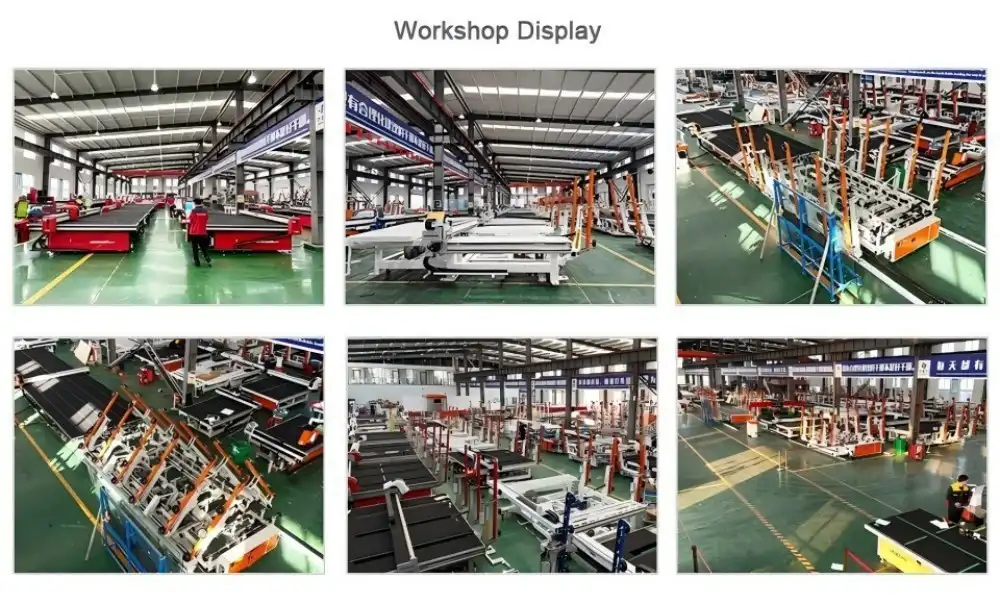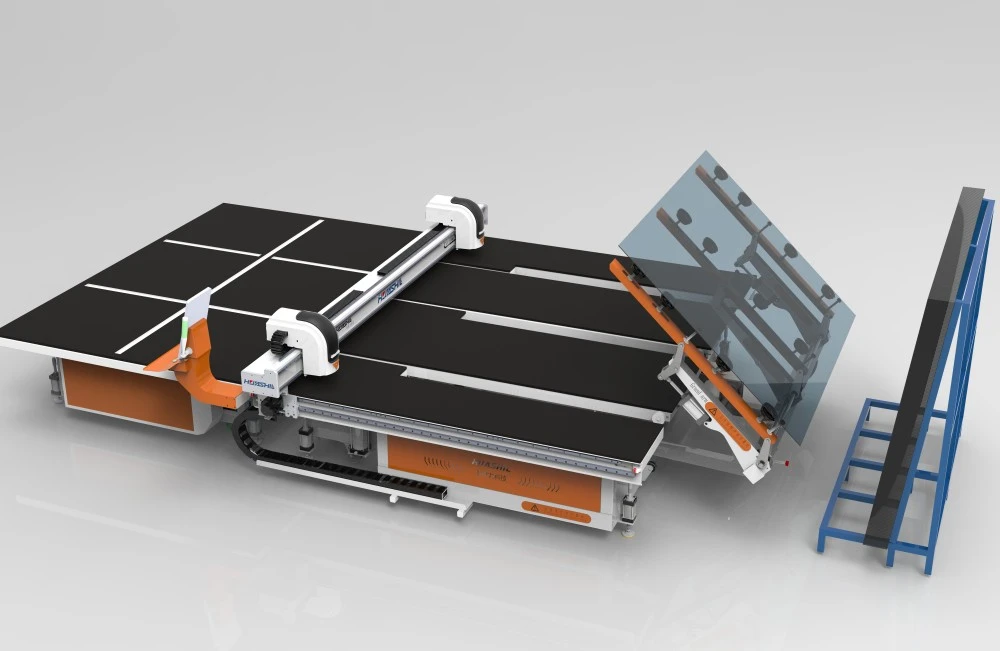Emergency stop mechanisms in glass cutting
One of the most critical safety features in any industrial machinery, including integrated glass cutting machines, is the emergency stop mechanism. These systems are designed to halt all operations immediately in case of a potential hazard or emergency situation.
Modern glass cutting equipment incorporates multiple emergency stop buttons strategically placed around the machine. These bright red, mushroom-shaped buttons are easily identifiable and accessible, allowing operators to quickly shut down the system if they notice any irregularities or potential dangers.
Advanced integrated glass cutting systems often feature:
- Redundant emergency stop circuits to ensure fail-safe operation
- Automatic detection of safety barrier breaches
- Integrated software that monitors machine parameters and triggers automatic shutdowns if abnormalities are detected

It's crucial for operators to familiarize themselves with the location and operation of these emergency stop mechanisms. Regular drills and training sessions should be conducted to ensure that all personnel can react swiftly and appropriately in case of an emergency.
Additionally, many modern machines incorporate zoned safety systems. These allow for partial machine shutdowns, isolating specific areas where a problem has been detected while allowing work to continue safely in unaffected zones. This feature helps maintain productivity while addressing localized issues.
Dust extraction systems for worker safety
Glass cutting processes inevitably produce fine particles and dust, which can pose significant health risks to workers if inhaled over extended periods. To mitigate these risks, state-of-the-art integrated glass cutting machines are equipped with sophisticated dust extraction systems.
These systems typically consist of:
- High-powered vacuum units
- HEPA filtration systems
- Localized extraction nozzles near cutting points
- Enclosed cutting areas to contain dust spread
The dust extraction process begins at the point of cutting, where specially designed nozzles capture particles as they are generated. These nozzles are often adjustable and can be positioned to maximize dust capture efficiency for different cutting patterns and glass thicknesses.
The extracted air then passes through a series of filters, including HEPA (High-Efficiency Particulate Air) filters, which can remove up to 99.97% of particles as small as 0.3 microns. This level of filtration is crucial for protecting workers from respirable crystalline silica, a known health hazard associated with glass cutting.
Many advanced systems also incorporate real-time monitoring of filter efficiency and air quality. These systems can alert operators when filters need replacement or if dust levels exceed safe thresholds, ensuring consistent protection for workers.
To further enhance safety, some cutting machines feature automated cleaning cycles. These cycles use compressed air to dislodge accumulated dust from critical components, maintaining optimal machine performance and reducing the need for manual cleaning, which can expose workers to dust hazards.
Protective barriers and laser safety protocols
Physical barriers play a crucial role in protecting operators and bystanders from the hazards associated with integrated glass cutting machines. These barriers are designed to prevent access to moving parts, contain flying debris, and in the case of laser-equipped machines, block potentially harmful radiation.

Modern protective barriers for glass cutting machines often include:
- Interlocked enclosures that automatically stop machine operation when opened
- Impact-resistant polycarbonate screens for visibility and protection
- Specialized laser-safe materials for machines using high-powered lasers
- Ergonomically designed access points for loading and unloading glass sheets
For machines utilizing laser technology, additional safety protocols are essential. Laser safety measures typically involve:
- Laser classification and appropriate warning labels
- Beam enclosures to prevent stray radiation
- Protective eyewear rated for the specific laser wavelength and power
- Interlock systems that shut off laser emission when enclosures are opened
- Training programs for operators on laser safety procedures
Advanced integrated glass cutting machines often incorporate smart barrier systems that adapt to different operational modes. For instance, during maintenance or setup, these systems might allow limited access to certain areas while maintaining protection for critical components.
Some cutting-edge machines even utilize augmented reality (AR) technology to project virtual barriers and safety zones onto the workspace. These visual cues help operators maintain safe distances from hazardous areas without impeding their ability to monitor and control the cutting process.
Regular inspection and maintenance of protective barriers are crucial. This includes checking for any signs of wear, damage, or misalignment that could compromise their effectiveness. Many modern machines include self-diagnostic features that can detect barrier integrity issues and alert maintenance personnel proactively.

Conclusion
The safety standards for integrated glass cutting machines are continually evolving to meet the challenges of increasingly sophisticated and powerful equipment. By implementing robust emergency stop mechanisms, effective dust extraction systems, and comprehensive protective barriers, manufacturers can create a safer working environment while maintaining high productivity levels.
As technology advances, we can expect to see even more innovative safety features integrated into these machines. From AI-powered hazard detection to advanced ergonomic designs that reduce operator fatigue, the future of glass cutting promises to be both safer and more efficient than ever before.
At Shandong Huashil Automation Technology Co., LTD, we are committed to delivering cutting-edge integrated glass cutting machines that not only meet but exceed industry safety standards. Our years of experience in automated R&D, manufacturing, and sales of mechanical equipment have allowed us to develop solutions that prioritize worker safety without compromising on performance.
If you're looking to upgrade your glass cutting capabilities with state-of-the-art equipment that puts safety first, we invite you to reach out to our team of experts. Contact us at salescathy@sdhuashil.com to learn more about our advanced integrated glass cutting machines and how they can revolutionize your glass production processes while ensuring the highest levels of workplace safety.
References
1. Johnson, M. (2023). "Advancements in Safety Protocols for Industrial Glass Cutting Machinery". Journal of Glass Technology, 45(3), 112-128.
2. Zhang, L., et al. (2022). "Laser Safety in Modern Glass Processing: A Comprehensive Review". Optics and Lasers in Engineering, 150, 106818.
3. Smith, A. & Brown, T. (2021). "Dust Extraction Systems in Glass Manufacturing: Efficiency and Health Impact Analysis". Industrial Health and Safety Review, 33(2), 78-95.
4. International Glass Cutting Machine Safety Association. (2023). "Global Standards for Integrated Glass Cutting Machine Safety: 2023 Edition". IGCMSA Publications.



